A new super-Earth has been discovered that has an extremely hot surface temperature, and this planet could be a boon for studying the atmospheres of rocky exoplanets. Plus, our daily news roundup, climate change, and how a petrified tree on Earth might help us hunt for fossils on Mars.
Media
Transcript
Hello and welcome to the Daily Space. I am your host Dr. Pamela Gay.
And I am your host Beth Johnson.
And we are here to put science in your brain.
I’m honestly not sure how this happens, but once again, our week is coming to a close with a massive pile of planetary science news to report in which the planet Earth is quite often the headliner. It seems our little planet is feeling the need for some attention and has been captivating scientists in a myriad of ways with its fits and starts and storms and fires.
As inhabitants of Earth, we are happy to share that there appears to have been no significant lasting impact to inhabited areas from yesterday’s magnitude 8.1 earthquake that occurred north of New Zealand. Tsunami activity in populated areas was minimal, and the earthquake occurred where land and people were also pretty minimal. I’m not quite sure how Earth pulled it off, but there was essentially a massive earthquake that got all our attention but doesn’t appear to have caused much if any death or destruction. I’ll take it.
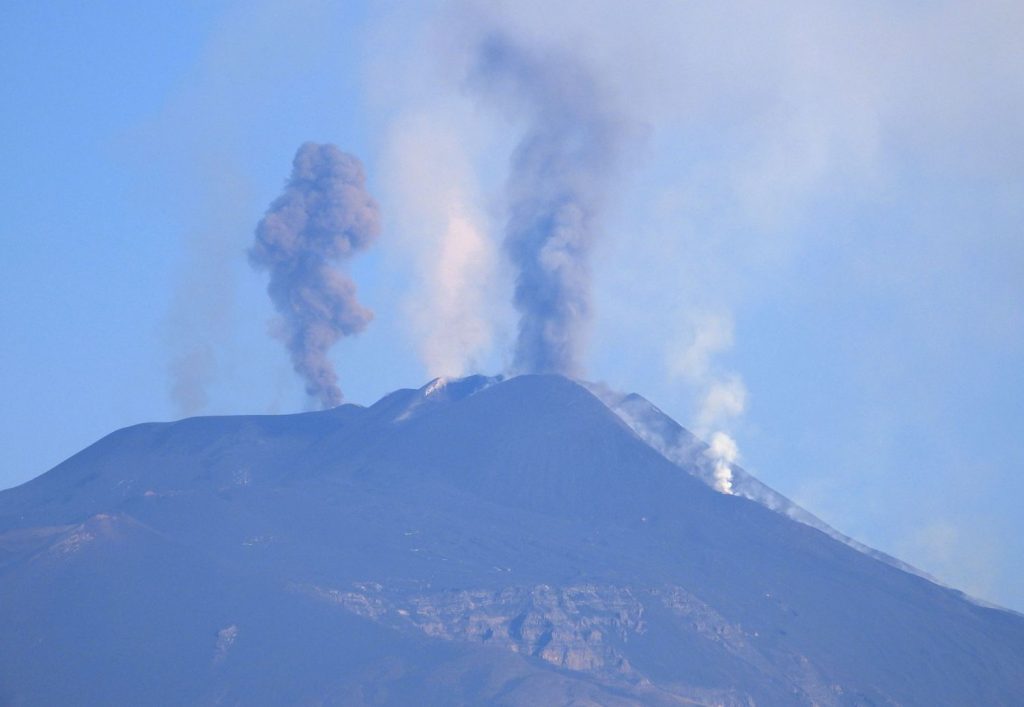
On almost the exact opposite side of the planet, in Iceland, on the Reykjanes Peninsula to be specific, earthquakes continue but with lowering magnitude, at least for now. Something dramatic could still happen, but it has definitely gotten less exciting to watch. We think this is good news, although I’m pretty sure Pamela was hoping for something a bit more destructive (constructive?) to land but not life.
Yeah yeah yeah, so I like a good volcano eruption. At least Mount Etna seems to be there for me. This extremely active volcano has had nine outbursts called paroxysms in just two days and continues to erupt over and over with new lava flows. At one point yesterday, both steam plumes and ash plumes could be seen rising from the mountain. A search of Twitter on the hashtag #Etna will not disappoint.
And again, this is a volcano behaving badly while not killing people; it’s just inconveniencing them by coating everything in ash.
If it seems like all we’re talking about is our planet Earth, you aren’t wrong. Right now, there aren’t a lot of big headlines coming from other sources. We do have a nice report on a sample brought back by Hayabusa – the original Hayabusa – from the asteroid Itokawa.

From the detailed study of a single grain, researchers have been able to determine that, and here I quote from the release: the asteroid [has] gone through extreme heating, dehydration, and shattering due to catastrophic impact. However, despite this, the asteroid came back together from the shattered fragments and rehydrated itself with water that was delivered via the in fall of dust or carbon-rich meteorites.
This work is published in Scientific Reports and was led by Queenie Chan.
That single grain was just ten microns in size and contained both the raw stuff the asteroid formed out of, as well as material that had been altered through heating, and this material was the same type of carbon-rich molecules that can be used to build life. To be clear, this asteroid didn’t have life, but it demonstrates just how common the ingredients might be.
And while the planetary folks were busy looking at grains from asteroids, astronomers were using the Hubble Space Telescope to try and understand why some giant stars periodically fade dramatically in brightness.

We’ve talked to you a lot about Betelgeuse, the red shoulder star of Orion that faded dramatically last year. Well, now another star has got in on the act: VY Canis Majoris. This is a red hypergiant that is 300,000 times brighter than the Sun. This star is actively tossing off its outer atmosphere, and all around it, high-resolution images show the carnage of blasted-off gas and dust.
In newly published work appearing in The Astronomical Journal with first author Roberta Humphreys, researchers worked to attach ages to the pockets of material moving away from VY Canis Majoris and found that these knots correspond to times when the star dimmed down to 1/6th its usual brightness during the past two centuries. This implies that the release of clouds of dust is a cause for dimming, and this is consistent with many of the theories for why Betelgeuse dimmed. With one explanation seeming to fit the same behavior in two different stars, it is looking more and more like this could be a common explanation for this kind of dimming: dust. It’s a dusty universe, folks.
Today a massive raft of papers on climate change came to my attention from all directions. The overall picture isn’t good, and once again, the primary message is that our past estimates of the effects of climate change underestimated a lot of factors, and things are getting worse faster than previously thought. Perhaps most disturbing is news that what we thought was a slow oscillation in Atlantic hurricane intensity is now driven by the effects of climate change, and by driven, I mean the oscillation isn’t really there anymore, and what we see is what we’re going to be living with.

In pre-industrial conditions, the hurricane cycles changed over a 40-60 year period that has now been linked to volcanic eruptions. Events like the 1991 Mount Pinatubo eruption can suspend ash throughout the atmosphere and change our climate for a short period of time. Nowadays, though, that ash isn’t always as dominant a factor.
Previously, we’d seen a cycle during the industrial age that was actually driven by the cooling effects of industrial sulfur pollution that came to an end with the Clean Air Act and allowed the warming effects of greenhouse gases to dominate the manmade climate impact of this Anthropocene era. Unless a volcano goes off with sufficient ash production to overcome our greenhouse gas pollution, we’re looking at a steady future of massive hurricanes. And as much as I love a good volcanic eruption, the kind of eruption needed is certain to cause either massive loss of life, massive economic damage, or both. I don’t actually want that kind of an eruption.
The team behind this paper is led by Michael Mann and this work appears in Science.
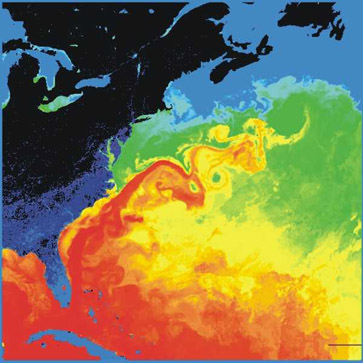
This work follows on with a study earlier this week that shows the Gulf Stream is slowing down. This possibility is something I first read in 2003 that made me wish I didn’t read Earth science articles. The Gulf Stream and related wind and water currents are why northern Europe has a moderate climate. Put simply, the Gulf Stream pumps warm water from the tropics northward, reducing the chill that might otherwise take over the north. If you add too much freshwater, such as from melting glaciers, to the oceans, the Gulf Stream can shut down.
Other factors are at play as well, all manmade. One of the side-effects of the problem is increased sea-level rise along the U.S. east coast. Miami has already seen a six-inch rise. This study was led by Levke Caesar and appears in Nature Geoscience.
From oceans to land, water is where we’re seeing the human impact the most in my opinion. We’re also seeing that fluctuations in the planet’s freshwater streams, ponds, and other surface features are minor compared to the changes occurring in dammed-up reservoirs. Natural fluctuations between wet and dry seasons are only about 8.6 inches while human-managed water features fluctuate by 2.8 feet. This is a three-fold difference, and this global average hides the nation-to-nation variability.
In places like the U.S., southern Africa, and the Middle East, where dams are used frequently, variations may be as much as 6.5 feet to 12.4 feet. These kinds of changes aren’t something our environment is adapted to handle, and according to study lead author Sarah Cooley, “There are a lot of ways in which this is bad for the environment,” ranging from harm to fish populations to potential increases in emissions of methane, a potent greenhouse gas.

Water is at the heart of life as we know it here on earth, and as we change our planet, we change our water, which just might make it a bit harder for everything to live.
In addition to these stories, we also had news on how human land impacts helped trigger the devastating flash flood in the Himalayas recently, and on how wildfire risks are getting worse around the globe. Earth science isn’t full of joy at the moment, so let’s maybe skip off this planet and consider some other ones.
This next segment has it all: a fascinating exoplanet, the potential for future studies, and my favorite topic, the puzzle of planetary formation.
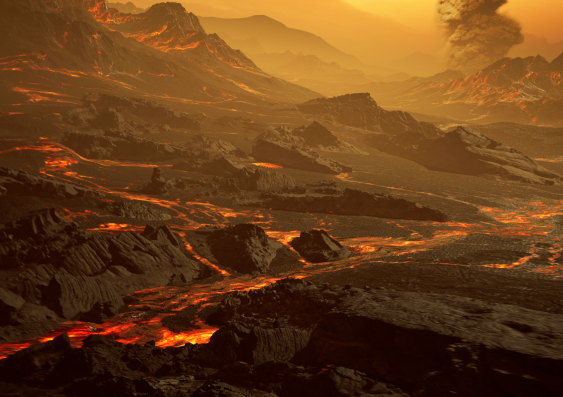
Let’s start with the exoplanet. It’s a very hot super-Earth called Gliese 486b, located about 26 light-years away – pretty close in astronomical terms. The surface temperature is around 430 degrees Celsius, so there are exactly zero expectations of finding life there. It’s 30 percent bigger than Earth and about three times heavier. Think Venus when you think of this world. There could even be scattered lava rivers running over the surface. Not exactly the picture of habitability we usually search for.
And yet, this planet was announced with no less than four press releases yesterday. So what has all the scientists excited? This super-Earth still has its atmosphere, and it’s a transiting planet, so we can study that atmosphere in the near future. We haven’t been able to study any other super-Earth this way. The findings were published in Science, and co-author Dr. Ben Montet notes: Understanding super-Earths is challenging because we don’t have any examples in our backyard. Gliese 486b is the type of planet we’ll be studying for the next 20 years.
That study begins with learning more about Gliese 486b’s atmosphere using spectrographs. Since this exoplanet transits in such a way that we can detect the changes in brightness of the host star, we can then use that geometry to do spectroscopy in two ways. The first method is used when the planet passes directly in front of the star. The light from the star then passes through the atmosphere of the planet, and we can use transmission spectroscopy to determine the composition of the atmosphere.
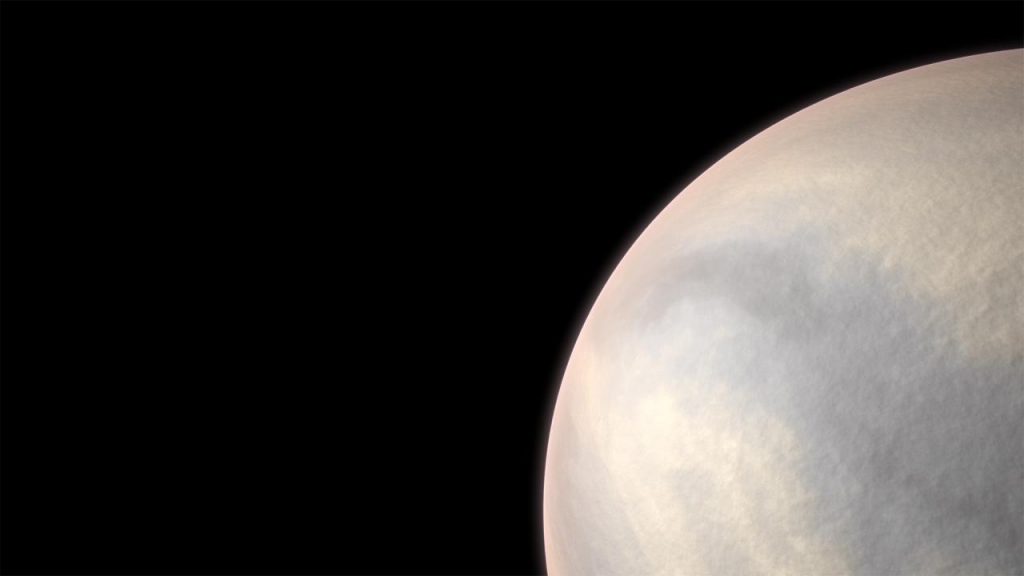
The second method is used when the planet begins to make that pass back around the back of the star from us. At that point, the light of the star illuminates the surface of the planet, and we can now use emission spectroscopy to confirm the composition of the atmosphere and possibly catch any components we might have missed.
Once again, this is not a planet for us to live on. Visit, maybe, with good space suits to protect us from the heat and keep us breathing. The gravity is much stronger than on Earth, and the planet is so close to its star that stellar flares and storms would be a problem. It would be nice to visit from a distance, but right now, I’d settle for just understanding the atmosphere from our comfy planet right here.
One other exoplanet of note was discovered recently, and I’m including it today because it’s just cool. Well, not cool as in temperature. In that case, it’s really hot.
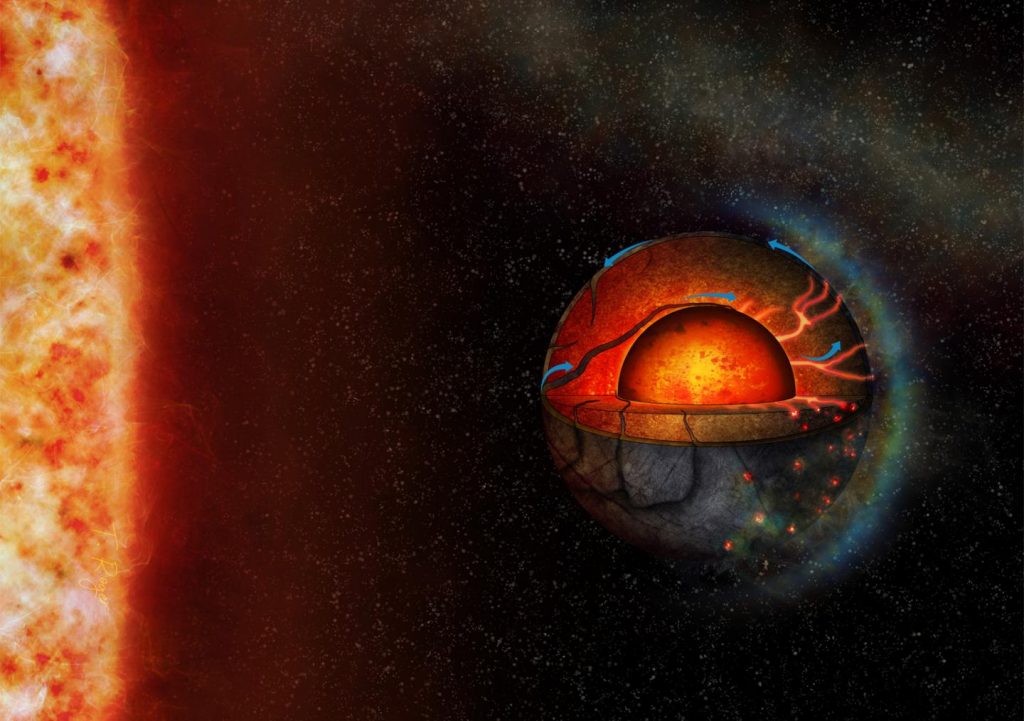
A new paper in The Astrophysical Journal Letters reveals that this exoplanet, LHS 3844b, might be the first example of another world with global tectonics. The researchers found evidence that the planet has what we call “flow patterns” inside it. These observations are made possible for the exact opposite reason that Gliese 486b is potentially fascinating — LHS 3844b has no atmosphere.
LHS 3844b is an Earth-sized rocky planet, tidally locked with its star. That means that one side of the planet stays incredibly hot from the star’s radiation while the opposite side is extremely cold. Based on computer simulations, the scientists determined that there is flow inside the planet from one hemisphere to the other. Lead author Tobias Meier explains: Most simulations showed that there was only upwards flow on one side of the planet and downwards flow on the other. Material, therefore, flowed from one hemisphere to the other.
Imagine a planet with tons of volcanoes on one side and none on the other. That is one possible configuration for LHS 3844b, and the team hopes to keep studying this world for more answers.
Our final segment of the day brings us back to Earth and allows us to dream of what might someday be found on Mars. And, for added measure, it includes past volcanic eruptions.
A couple of weeks ago I became captivated with news coming from the Greek Island of Lesbos of a tree found petrified in lava and ash. This was a complete tree with roots, trunk, branches, and even a few leaves found all together, and this was the first time such a complete tree was found. Although it’s unclear if the leaves were from this or a different tree. According to Reuters, animal bones were also found in the vicinity.
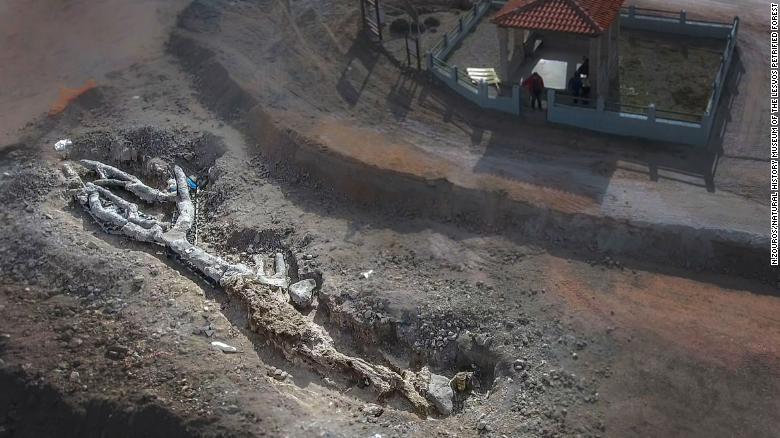
This is just the latest discovery from ongoing excavations in Lesbos. Roughly 17 to 20 million years ago, volcanic eruptions coated the island in thick layers of ash and lava that, when combined with rain, created the perfect slurry to preserve a forest.
This new tree appears to be from roughly 20 million years ago, and researchers from the Natural History Museum of the Lesvos Petrified Forest are looking forward to studying the tree to learn what it was and to learn more about the ancient climate of this island. While this is the most complete tree so far uncovered, it is part of an entire ecosystem that has been preserved. In 2015, UNESCO made this site a Global Geopark, and it is a proposed World Heritage Site. The trees and petrified foliage that have been found here include a diversity of fruit trees, conifers, and more that point to this island once having a subtropical climate that is very different from what we see today.
Finding things preserved in lava isn’t new. The Italian cities of Pompeii and Herculaneum both host impressive archaeological sites where ancient cities were preserved by an eruption of Mount Vesuvius in the year 79, and someday, future archaeologists will be digging up a Mexican village buried in lava in 1943, leaving only the upper levels of a church still visible.
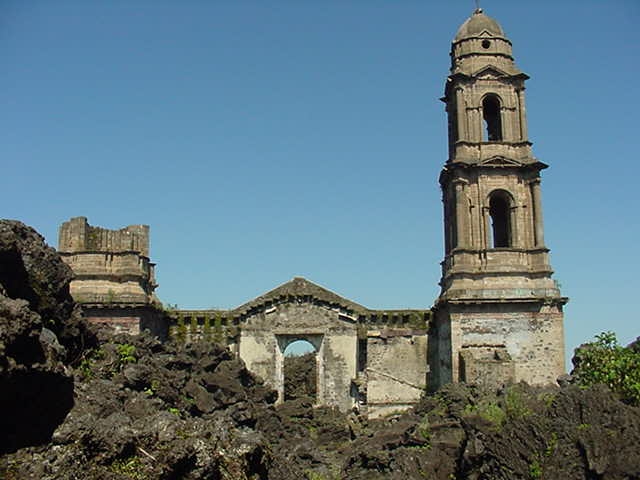
Looking around our solar system, volcanism isn’t all that unusual. Most commonly, cryovolcanoes are erupting with ice, kind of all over the place, but I don’t think those are capable of the same awesome petrification we keep finding on Earth. Io has regular old lava-spewing volcanoes, but its surface is getting resurfaced a bit too fast for there to be much hope of safely exploring what might be preserved there. But Mars… I’d like to point out that Mars has an amazing array of lava fields that in many cases were formed in the years after Mars was capable of supporting life.
Right now, the Perseverance rover is on Mars looking for regular old fossil evidence of past life on Mars. This could be stromatolites or chemical signatures left behind in the rocks it will someday sample. To be clear, Percy isn’t going to go digging in lava. That’s not its job, and it doesn’t have the right tools and power.
But one day, there might be the ability to go looking for petrified life on Mars, and the petrified forest of Lesbos along with the cities of Herculaneum and Pompeii tell where to look: the best preservation appears tied to pyroclastic flows, which are rivers of ash, gas, and other volcanic matter that can sweep down a volcano at 60 to 400 mph! This fast-moving material can flash preserve anything it encases, including both humans and trees and just about anything else.
If we can find what looks like a nicely preserved pyroclastic flow deposit dating back to when Mars was wet and warmer, who knows what might be preserved. Moss? Lichens? I can’t imagine anything more complicated, but who am I to guess at what the universe might have allowed to form that we might one day be able to find.
This has been the Daily Space.
Learn More
Organic Material Found on Single Grain of Asteroid Itokawa
- Royal Hollaway press release
- “Organic matter and water from asteroid Itokawa,” Q. H. S. Chan et al., 2021 March 4, Scientific Reports
VY Canis Majoris Dimming Due to Dust, Hubble Images Show
- NASA Goddard press release
- “The Mass-loss History of the Red Hypergiant VY CMa,” Roberta M. Humphreys et al., 2021 February 4, The Astronomical Journal
Pre-Industrial Atlantic Hurricane Cycles Likely Caused by Volcanoes
- Penn State press release
- “Multidecadal climate oscillations during the past millennium driven by volcanic forcing,” Michael E. Mann et al., 2021 March 5, Science
Atlantic Gulf Stream at Weakest in Over a Millennium
- PIK press release
- “Current Atlantic Meridional Overturning Circulation weakest in last millennium,” L. Caesar et al., 2021 February 25, Nature Geoscience
Survey Finds Freshwater Fluctuations Mostly Due to Human Impact
- Stanford University press release
- NASA Goddard press release
- “Human alteration of global surface water storage variability,” Sarah W. Cooley, Jonathan C. Ryan, and Laurence C. Smith, 2021 March 3, Nature
Super-Earth Found That Can Test Planetary Atmospheric Models
- IAC press release
- MPIA press release
- NOIRLab press release
- UNSW press release
- “A nearby transiting rocky exoplanet that is suitable for atmospheric investigation,” T. Trifonov et al., 2021 March 5, Science
Volcanoes May Light Up Only One Hemisphere of Newly Found Exoplanet
- NCCR PlanetS press release
- University of Bern press release
- “Hemispheric Tectonics on LHS 3844b,” Tobias G. Meier et al., 2021 February 24, The Astrophysical Journal Letters
Petrified Tree Found on Greek Island, Complete with Roots and Branches
- Natural History Museum of the Lesvos Petrified Forest press release (Greek)
- CNN article
Credits
Written by Pamela Gay and Beth Johnson
Hosted by Pamela Gay and Beth Johnson
Audio and Video Editing by Ally Pelphrey
Content Editing by Beth Johnson
Intro and Outro music by Kevin MacLeod, https://incompetech.com/music/


 We record most shows live, on Twitch. Follow us today to get alerts when we go live.
We record most shows live, on Twitch. Follow us today to get alerts when we go live.